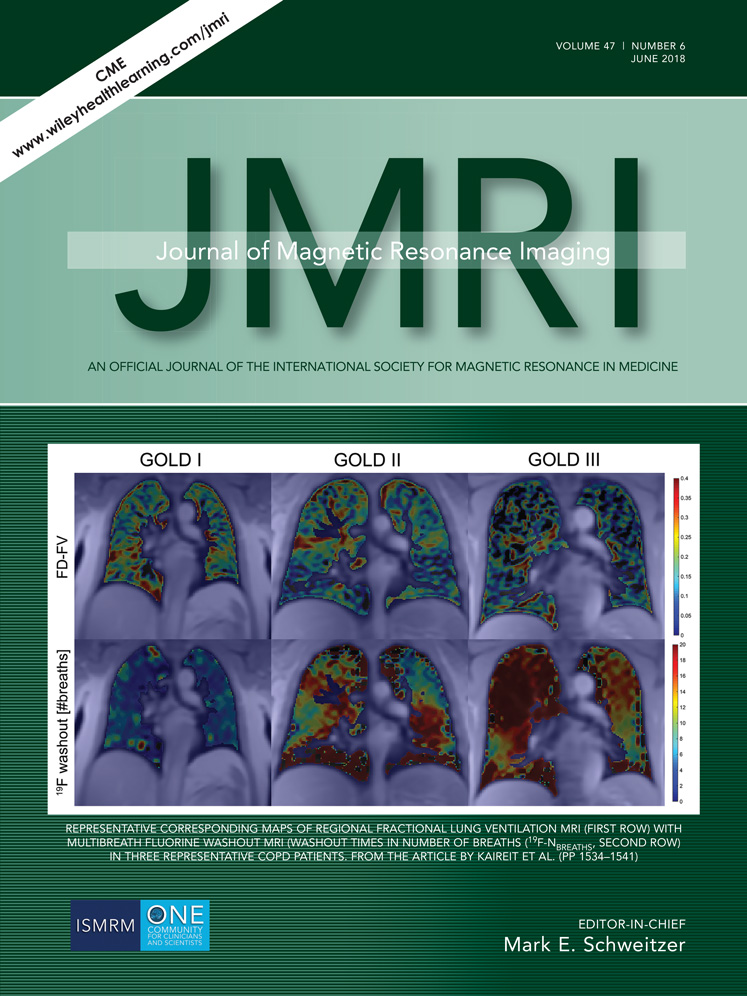Breast lesion characterization using whole-lesion histogram analysis with stretched-exponential diffusion model
Abstract
Background
Diffusion-weighted imaging (DWI) has been studied in breast imaging and can provide more information about diffusion, perfusion and other physiological interests than standard pulse sequences. The stretched-exponential model has previously been shown to be more reliable than conventional DWI techniques, but different diagnostic sensitivities were found from study to study.
Purpose
This work investigated the characteristics of whole-lesion histogram parameters derived from the stretched-exponential diffusion model for benign and malignant breast lesions, compared them with conventional apparent diffusion coefficient (ADC), and further determined which histogram metrics can be best used to differentiate malignant from benign lesions.
Study Type
This was a prospective study.
Population
Seventy females were included in the study.
Field Strength/Sequence
Multi-b value DWI was performed on a 1.5T scanner.
Assessment
Histogram parameters of whole lesions for distributed diffusion coefficient (DDC), heterogeneity index (α), and ADC were calculated by two radiologists and compared among benign lesions, ductal carcinoma in situ (DCIS), and invasive carcinoma confirmed by pathology.
Statistical Tests
Nonparametric tests were performed for comparisons among invasive carcinoma, DCIS, and benign lesions. Comparisons of receiver operating characteristic (ROC) curves were performed to show the ability to discriminate malignant from benign lesions.
Results
The majority of histogram parameters (mean/min/max, skewness/kurtosis, 10–90th percentile values) from DDC, α, and ADC were significantly different among invasive carcinoma, DCIS, and benign lesions. DDC10% (area under curve [AUC] = 0.931), ADC10% (AUC = 0.893), and αmean (AUC = 0.787) were found to be the best metrics in differentiating benign from malignant tumors among all histogram parameters derived from ADC and α, respectively. The combination of DDC10% and αmean, using logistic regression, yielded the highest sensitivity (90.2%) and specificity (95.5%).
Data Conclusion
DDC10% and αmean derived from the stretched-exponential model provides more information and better diagnostic performance in differentiating malignancy from benign lesions than ADC parameters derived from a monoexponential model.
Level of Evidence: 2
Technical Efficacy: Stage 2
J. Magn. Reson. Imaging 2018;47:1701–1710.




